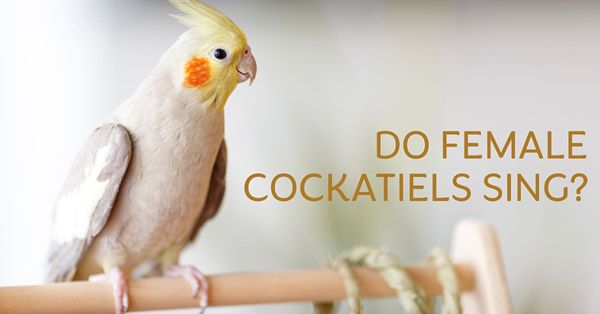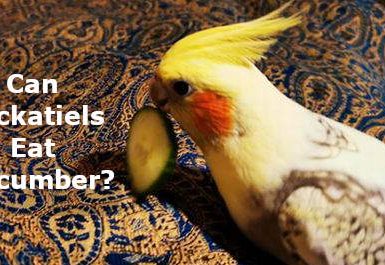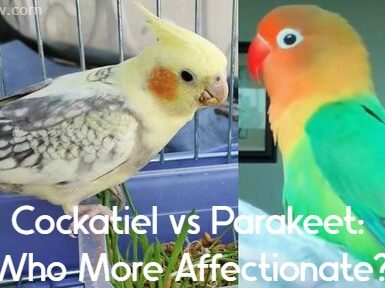
Cockatiels are pleasant and beautiful parrots that attract the attention of many. But many ask, “Can a female cockatiel sing?”
Some claim that a female cockatiel cannot sing, while others say the opposite.
There are also cases where a female rooster can sing just as well as a male. This depends on the individual characteristics of each bird.
Thus, the question of whether female cockatiels can sing remains open.
Can female cockatiels sing? Gender Affects Healthy Production
Male and female cockatiels have different forms of larynx, which affects healthy production.
Male coleus have a larger and wider larynx than females. This is due to sex differences in body size and bone. The largest larynx allows males to produce louder sounds and more complex melodies used for communication and acquaintance with peers.
Females have smaller, thinner larynxes. This allows them to produce higher and clearer tones used during nesting and communication within a family or flock.
Additionally, sex can affect the frequency with which cockatiel sings.
During the nesting and rearing period, females are more likely to put chicks to sleep by singing and need to produce more sound. Thus, during this time, the female will sing more to calm the chick. Males during this period remain silent and are disturbed by the birth of food.
Thus, the sex of the rooster affects the sound production and its intended purpose. Both sexes can sing, but their melody and tonality may vary depending on the purpose for which the sound is produced.
Do they sing female cockatiels?
Corellas are one of the most beautiful and popular birds in the parrot family. They are known for their bright colors, kind nature, and ability to repeat words.
However, many Cockatiel owners wonder if the females can sing as good a song as the males. The answer to this question is a little more complicated than it may seem.
- First of all, all cockatiels, regardless of gender, have the ability to sing. The degree of song development depends on the individual characteristics and genetic predisposition of the bird.
- Second, male cockatiels sing most frequently during the breeding and brooding season. During this time they become especially active and begin to sing loudly to attract females.
- Female cockatiels may also sing, but this is less common than in males and appears to be a quieter, gentler throttle.
Thus, we can conclude that female cockatiels can also sing, but much less frequently than males and with a quieter, softer tone.
Differences in Singing between Males and Females
Female cockatiels can also sing, but their singing is different from that of males. The main difference lies in the pitch and melody of their voices.
Male Cockatiel have higher voices than females and their melodies are often more complex and varied.
Females usually have softer, quieter melodies and often use lower pitches and simpler patterns.
The best way to know if a female cockatiel is singing is to simply listen. Not all females sing, but when your bird does, you will hear a soft, melodious bass song.
Duration of a Cockatiels Life and its Effect on Singing
Female cockatiels are active, social birds and can make sounds. However, due to natural influences, young and adult female cockatiels produce different sounds.
Young females usually begin to produce their first sounds at three months of age. These may be short, monotonous whistles used to communicate with parents or other members of the same species. Over time, young females develop vocal skills and are able to sing as well as adult males.
Adult females can also sing. However, their vocalizations differ from those of males. Usually, the most prominent sounds made by adult females are the short, high-pitched sounds they make to attract the attention of males. Adult females may use these sounds to communicate or call their feeders.
Conclusion: Young and adult cockatiels can make sounds, but they do so in different ways. Young females begin producing sounds earlier, but their song repertoire is more limited. Adult females can also sing, but their main sounds are short, high-pitched notes.
Teaching Women to Sing
The Corella is a parrot with a distinctive voice that can be heard up to 3 kilometers away. However, only males can sing. But is it possible to train a female to sing?
Yes, it is possible; some Corella owners claim that females can repeat single words or phrases that they have heard. However, it takes persistence and patience for the female to start singing.
It is important to understand that females do not have the instinct to sing. Therefore, daily lessons are necessary to develop a musical ear.
How can I teach her to sing?
- With repetition – always repeat the same notes and songs so that the woman remembers them,
- With the help of a Cockatiel teacher – put the woman next to another woman who can sing, this will help her understand what to do,
- Besides, with games and activities – try playing music, and teach the woman to play unusual instruments.
Now you know that it is possible to teach a female cockroach to sing. The main thing is the capacity for patience and the desire to develop the bird’s musical talent.
Duration and intensity of songs in female hits
The duration of a song in the female core is about the same as a male song. Typically, they are two to five minutes long. Some women may sing more, but these are special cases. It is important to note that the female core does not sing birds and their songs are not as loud and complex as the male.
The intensity of singing also varies between female and male satellites. Typically, men sing louder and taller. However, this depends on the particular individual and the individual characteristics of their singing. We must not forget that females can sing for many reasons. To communicate with other birds or to express emotions. Thus, the intensity of a female’s song may vary from state to state.
Differences in song between females and males relate not only to the intensity, but also to the style and coloration of the song. The songs of male cockatiels are more complex and varied, with delicate melodic and aerial trills. At the same time, the female bird’s song is simpler and more monotonous, with no particular exaggeration and variation.
- The duration of the female and male songs is similar, ranging from two to five minutes.
- The intensity of the song may vary depending on the situation
- Males sing more complex and melodic, females sing more simple and monotonous
Effect of environmental conditions on female performance of the song
Cockatiels are a popular species and have become popular pets because of their beauty and unpretentious behavior. There is a view that only males can sing, but this is absolutely untrue.
In fact, housing conditions can affect a woman’s singing potential. If a woman lives in comfortable conditions and receives a diet rich in vitamins, she can also sing.
Koreans are social birds that live in large flocks and like to associate. The more comfortable a female is in the nest, the more likely she is to initiate singing. Additionally, the female’s voice can have greater melody and volatility, making it truly unique.
– Creating a comfortable environment is critical.
– Ensure adequate space in the cage or poultry house,
– Set up a temperature regime,
– differential diet that includes fruits and vegetables,
– Provide access to fresh water and fine gravel to keep nails sharp.
Why do female singers sing?
Contact. One of the main goals of female singers’ songs is communication. The song is used to achieve contact between females and males or to maintain communication within the herd. Some species, depending on how they sing, can even send messages of different information.
Food Search. Some female birds can sing to find food. This is characteristic of solitary species living in densely populated areas. They can make a recall sound to attract insects and other prey.
Territoriality. Some females use this song to defend their territory. They may sing to scare off other birds trying to invade their area.
Mating Preparation. In some cases, females may sing to attract the attention of males before the start of the reproductive season. They may use the song to indicate readiness for mating and health and strength.
Role in Breeding
Koreans are social birds and are long term couples in nature in the form of a couple. In this case, the male and female take care of the offspring.
The reproduction of the cockatiel begins with the male taking care of the female, providing food and treating it. He sings and can sing. During the affair, he begins to sing, dance, and do all sorts of tricks.
But what about women?
Female cockatiels can sing too, but their singing is not as obvious as the men. During flirting, they make chases and other sounds that can be considered singing.
What about reproducing offspring?
When a female and male pair up, they usually begin to build a nest. They take care of the eggs together and when the eggs hatch, they breastfeed them with chicks.
Thus, the reproduction of cockatiels is just a kind of general care of the male and female offspring. Female cockatiels are not so sung, but they are also important in the reproductive process and in the care of their offspring.
Question and Answer:
Question: Can female cockatiels sing?
Answer: Yes, female cores can sing, but their singing is usually less pronounced than males.
Question: Is it possible to distinguish between the voices of females and males?
ANSWER: No, we cannot distinguish between female and male satellites as voices because they can sing on the same scale and with the same level of intensity.
Question: Why do women in the corelas have to sing?
ANSWER: Female cores use singing to attract male attention, create contact, communicate with other females, and convey information about their area and their condition.
Question: Can female cockatiels sing during the nesting period?
Answer: Yes, female corals can sing during the egg-laying period, but they are usually busy with eggs and are seldom active.
Question: How often and at what time do cockatiels sing?
Answer: cockatiels can sing at any time of the day, but most often they are active in the morning and evening. They usually sing in a variety of situations, including greeting, parting, contact, and communication with other birds.






Add comment